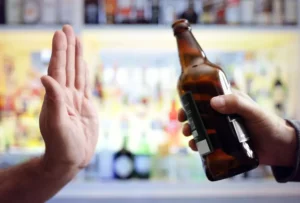
We currently are examining ostracism effects in the group formation project. Social learning theory is rarely mentioned in current studies examining the impact of acute alcohol administration on emotion. Yet the key points of emphasis brought to the fore during the 1970s and 1980s have been swallowed whole. The assessment of anxiety has progressed well beyond single self-report instruments and is likely to continue to embrace advances in cognitive and affective sciences including both behavioral and neurobiological approaches. So too is there heightened recognition that anxiety does not occur in a vacuum, and that particular environmental contexts must be considered when developing and testing new theories.
Getting Help for Alcohol Addiction

Maybe you are concerned that your drinking is becoming a problem, or maybe someone close to you has shown concern about your drinking. People tend to drink alcohol on these occasions, and in other social situations, both as a means of celebrating with others social drinking and drinking problem and as a way to relax and fit in during potentially stressful or uncomfortable situations. It is so ingrained in our culture that it’s considered a normal part of everyday life. Drinking is a part of social gatherings, celebrations, ceremonies, and more.
Personalized Medicine
- Meta-analysis of superordinate factors and underlying variables of interest and solitary drinking.
- Until very recently, I hadn’t even heard of naltrexone, the drug that would solve this for me – much like the weight loss benefits of the Type 2 diabetes medication Ozempic.
- But as you continue to drink, you become drowsy and have less control over your actions.
- But even if you’re able to succeed at work or hold your marriage together, you can’t escape the effects that alcoholism and alcohol abuse have on your personal relationships.
- Packages start at £345 for the private GP phone consultation, the ongoing prescriptions (the pills cost an extra £90 for 30) and three months of counselling.
- This, in turn, may cloud their judgment and make them unaware of the increasing risk of developing a harmful relationship with alcohol.
To test alcohol’s effects during group formation in real-time, we used the Facial Action Coding System (FACS; Ekman, Friesen, & Hager, 2002). FACS identifies facial expressions, or action units, thought to relate to emotion (Ekman & Rosenberg, 2005), and is the most reliable and comprehensive facial coding system. [The Duchenne smile involves contraction of both the zygomaticus major (raising the corners of the mouth) and orbicularis oculi (raising the cheeks and producing crow’s feet around the eyes) muscles, whereas a non-Duchenne-smile involves only contraction of the zygomaticus major muscle]. In addition to facial expression, we also examined content-free speech patterns, which can reflect emotional states and social processes (Dabbs & Ruback, 1984; Leary & Kowalski, 1995). Finally, the study included self-report measures of affect and social bonding collected just after the interaction.
- According to the National Institute on Alcohol Abuse and Alcoholism (NIAAA), “low-risk” drinking for females consists of no more than 7 drinks per week and no more than 3 drinks per sitting.
- The resulting epidemics of loneliness and anxiety, he concluded, led people to numb their pain with alcohol.
- It is intended as a resource to understand what treatment choices are available and what to consider when selecting among them.
- If replicated, interventions may profitably target social reward as a mechanism underlying the development of problematic drinking in young adults.
- Despite the potentially lethal damage that heavy drinking inflicts on the body—including cancer, heart problems, and liver disease—the social consequences can be just as devastating.
- This review focuses on a critical but relatively understudied interpersonal factor in alcoholism etiology—the importance of considering whether alcohol consumption occurs in social versus solitary settings.
Setting Healthy Boundaries in Relationships
“Bill C-61 must effectively address the shameful record of Canada’s failure to ensure First Nations have access to safe drinking water,” it says. “Canada’s promises of ’best efforts’ in the bill are not good enough. The Ermineskin Cree Nation says Ottawa’s proposed legislation on First Nations drinking water fails to recognize that people on reserves have the same right to trust what comes out of their tap as every Canadian. I have to believe that with enough coverage of such impressive success https://ecosoberhouse.com/ rates, the NHS might be motivated to take another look at its approach to this medication. Of the 600,000 aforementioned alcohol-dependent people in England alone, a staggering 82 per cent are not even in treatment, according to a recent report. And if the Government can’t bring themselves to care about these addicts, The Department for Health and Social Care has estimated, at last count, the total cost of alcohol harm for the NHS and the wider public to exceed £25 billion a year.

- As noted by Wilson (1982) and Sher (1987), a major objective of TRT research has been to investigate both the underlying mechanisms mediating alcohol’s effects on emotion and the conditions under which alcohol is reinforcing, including understanding in whom the effects are most pronounced.
- Rates of cirrhosis had also plummeted, and would remain well below pre-Prohibition levels for decades.
- The evidence reviewed above suggests that solitary drinkers may not expect or obtain the same kind of social rewards from alcohol in social settings, but this needs to be tested in experimental studies that manipulate the context of alcohol consumption.
For males, it consists of no more than 14 drinks per week and no more than 4 drinks per day. In 2010, a national assessment of First Nations water found Ermineskin’s water failed Canadian drinking water guidelines on a weekly basis, with both health and appearance consequences. When the bill was introduced in December, the government said the law would require Ottawa to make “best efforts” to provide safe drinking water, establish minimum funding levels and create national standards for First Nation lands. Before I became a mother, I alternated between knocking back a bottle of chardonnay every night after work and going weeks without any at all (white knuckling, as it’s known in sobriety speak). Indeed I long ago came to the reluctant conclusion that I couldn’t moderate. I was either in a situation where I could drink as much as I liked (on holiday, at a party, or post-parenthood, not in charge of my toddler) or I abstained entirely.



